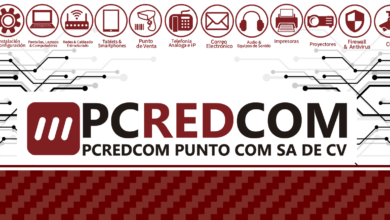The Essential Guide to Liquidity Pool Standard vs CMMC

In the liquidity pool standard vs cmmc of finance and cybersecurity, understanding various standards and frameworks is essential for organizations aiming to thrive. Two significant concepts often come up are the Liquidity Pool Standard and the Cybersecurity Maturity Model Certification (CMMC). While they serve different purposes, comprehending their nuances can help businesses make informed decisions. This guide will delve into both standards, comparing their objectives, requirements, and implications for organizations in the context of “liquidity pool standard vs CMMC.”
What is a Liquidity Pool?
A liquidity pool is a collection of funds in a smart contract that facilitates trading in decentralized finance (DeFi) ecosystems. It allows users to trade cryptocurrencies without needing a traditional exchange, relying on liquidity providers who deposit their assets into the pool. These providers earn fees based on their contribution and the trading volume within the pool.
Key Features of Liquidity Pools
- Decentralization: Unlike traditional exchanges, liquidity pools operate without a central authority, providing a decentralized trading environment.
- Earning Potential: Users can earn rewards through transaction fees or tokens by providing liquidity.
- Impermanent Loss: This refers to the temporary loss of funds experienced by liquidity providers due to price volatility.
Understanding the Liquidity Pool Standard
The Liquidity Pool Standard is a framework designed to establish best practices for liquidity provision in DeFi environments. By addressing potential risks and vulnerabilities associated with liquidity pools, it aims to create a more secure and efficient trading experience.
Objectives of the Liquidity Pool Standard
- Risk Mitigation: Identify and minimize risks associated with impermanent loss and intelligent contract vulnerabilities.
- Transparency: Promote transparent practices among liquidity providers and users to build trust within the community.
- Interoperability: Encourage compatibility between different DeFi platforms and liquidity pools, fostering collaboration and innovation.
Critical Components of the Liquidity Pool Standard
- Smart Contract Audits: Regular audits of smart contracts to ensure their security and functionality.
- Liquidity Provider Incentives: Guidelines for offering fair rewards to liquidity providers.
- User Education: Initiatives aimed at educating users about risks and best practices in liquidity provision.
What is CMMC?
The Cybersecurity Maturity Model Certification (CMMC) is a framework developed by the U.S. Department of Defense (DoD) to enhance cybersecurity across the defense supply chain. CMMC aims to ensure that all contractors meet specific cybersecurity standards to protect sensitive government data.
CMMC Levels
CMMC consists of five maturity levels, each with its own set of requirements:
- Level 1: Basic Cyber Hygiene: Basic security practices like using antivirus software and ensuring that passwords are changed regularly.
- Level 2: Intermediate Cyber Hygiene: More advanced security practices, including risk assessments and incident response plans.
- Level 3: Good Cyber Hygiene: Comprehensive security measures in line with the National Institute of Standards and Technology (NIST) guidelines.
- Level 4: Proactive: Enhanced practices that involve continuous monitoring and improving security protocols.
- Level 5: Advanced/Progressive: The most stringent security measures with advanced threat detection and response capabilities.
Objectives of CMMC
- Data Protection: Ensure sensitive government data is adequately protected from cyber threats.
- Standardization: Create a standardized approach to cybersecurity for defense contractors.
- Continuous Improvement: Encourage ongoing assessment and improvement of cybersecurity practices.
Comparing Liquidity Pool Standard vs CMMC
While the Liquidity Pool Standard and CMMC aim to enhance security and trust, they operate in vastly different domains. Here’s a closer look at their differences and similarities in the liquidity pool standard vs CMMC context.
Purpose and Focus
- Liquidity Pool Standard: Primarily focused on the DeFi sector, this standard emphasizes risk management and transparency in liquidity provision. Its goal is to foster a secure trading environment for users and liquidity providers.
- CMMC: Aimed at protecting sensitive government data, CMMC focuses on cybersecurity practices within defense contractors. Its objective is to standardize cybersecurity measures across the defense supply chain.
Target Audience
- Liquidity Pool Standard: The primary audience includes decentralized finance platforms, liquidity providers, and users engaging in cryptocurrency trading.
- CMMC: Targeted at defense contractors and organizations handling Controlled Unclassified Information (CUI) within the DoD supply chain.
Compliance and Certification
- Liquidity Pool Standard: There may be informal guidelines or community standards, but no official certification process exists. Compliance is often self-regulated within the DeFi community.
- CMMC: A formal certification process requires organizations to undergo assessments to demonstrate compliance with the designated level of cybersecurity practices.
Risk Management
- Liquidity Pool Standard: Focuses on mitigating risks associated with impermanent loss, intelligent contract vulnerabilities, and liquidity shortages.
- CMMC: Concentrates on protecting sensitive data from cyber threats, ensuring organizations have robust security measures.
Regulatory Framework
- Liquidity Pool Standard: Primarily governed by community-driven initiatives and self-regulation within the DeFi sector.
- CMMC: Backed by the U.S. government, with specific regulations and requirements that organizations must adhere to to do business with the DoD.
The Importance of Understanding Both Standards
As the DeFi sector grows, understanding the Liquidity Pool Standard vs. CMMC becomes increasingly vital for participants looking to mitigate risks associated with liquidity provision. On the other hand, compliance with CMMC is essential for businesses operating within the defense sector to maintain contracts and protect sensitive information.
Integrating Best Practices
Organizations that operate in both realms—such as those involved in blockchain technology for defense applications—must integrate best practices from both standards. By doing so, they can enhance their overall security posture while promoting trust within the community.
Conclusion
In conclusion, while the Liquidity Pool Standard vs CMMC serves distinct purposes within their respective domains, they emphasize the importance of security, risk management, and transparency. Understanding these standards is crucial for organizations looking to navigate the complexities of modern finance and cybersecurity. As the landscape evolves, staying informed about these frameworks will help businesses comply with regulations and build trust with their stakeholders.
FAQs
1. What is a liquidity pool standard?
A liquidity pool standard is a framework designed to establish best practices for liquidity provision in decentralized finance (DeFi) environments. It focuses on risk management, transparency, and interoperability.
2. What does CMMC stand for?
CMMC stands for Cybersecurity Maturity Model Certification, a framework developed by the U.S. Department of Defense to enhance cybersecurity across the defense supply chain.
3. How do liquidity pool standards and CMMC differ?
Liquidity pool standards focus on decentralized finance and liquidity provision, while CMMC aims to protect sensitive government data within the defense sector through standardized cybersecurity measures.
4. Is there a certification process for liquidity pool standards?
There is no formal certification process for liquidity pool standards; compliance is often self-regulated within the DeFi community.
5. Why is understanding both standards necessary?
Understanding both standards is crucial for organizations operating in the DeFi and defense sectors. It enables them to mitigate risks, comply with regulations, and build trust with stakeholders.
You May Also Read: https://techzeper.com





